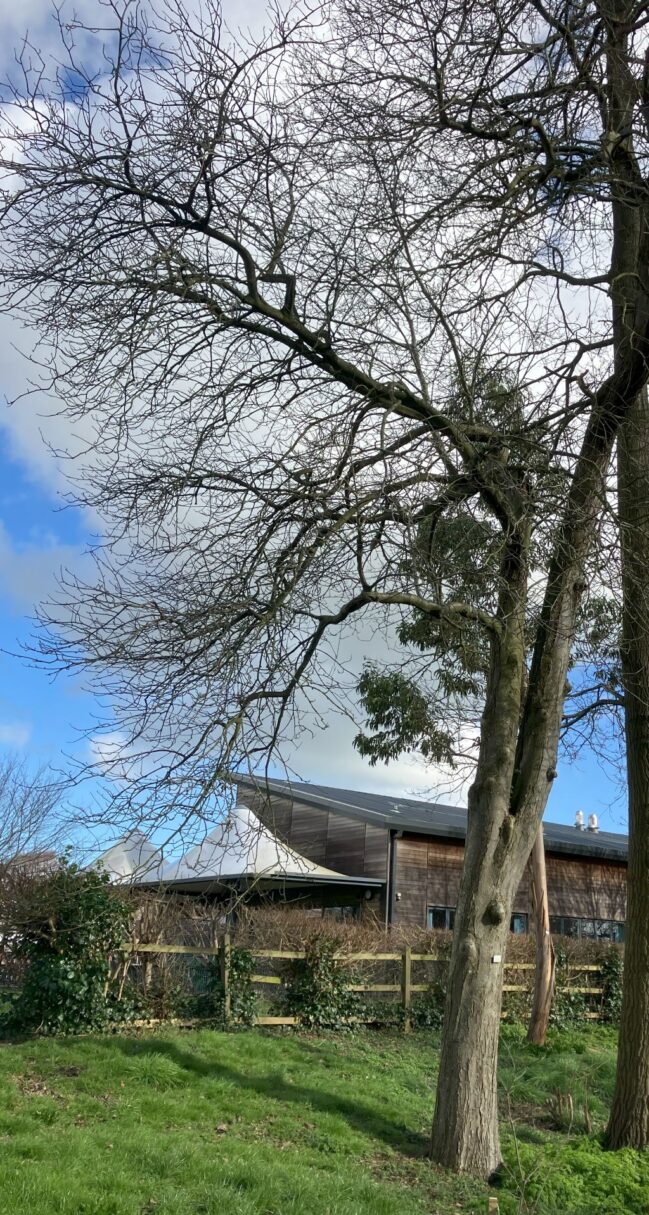#101 SERVICE TREE OF FONTAINBLEAU
Karpatiosorbus latifolia

Planted: 1916
This tree is at the east End of the Malus Avenue, near the field gate.
| Distribution: | Rare Discovered in the ancient forest of Fontainebleau, now under the protection of France’s Office National des Forêts. An apomietic species derived from a hybrid between Sorbus torminalis and a species of Sorbus Aria (whitebeam) group; breeds true from seed. |
| Planting Date: | Purchased in 1916 from John St Barbe Baker, The Firs, West End, Southampton, Hampshire. Sold as a True Service Tree. |
| Growth Habit: | A small to medium sized deciduous tree |
| Bark: | Downy young shoots and shaggy, peeling bark. |
| Leaf: | Ovate, or broad elliptic, sharply lobed, 5 to 10 cm long, often as wide at the base as long. Pointed lobes are sharply toothed, ribs 6 to 10 on each side, stalk downy – 12 to 25 mm. Smooth dark lustrous green above, coverd beneath with a greyish felt. |
| Flowers: | White 15 mm across in 7.5 cm corymbs during May; stalks and calyx very wooly. |
| Fruit: | Glogular 12 mm diameter – orange or dull brownish red. |
| Toxicity: | Seeds contain hydrogen cyanide. Unless the seed is very bitter it should be perfectly safe in reasonable quantities. In excess, it can cause respiratory failure and even death. |
| Potential tree size: | 10 to 15m, sometimes over 20m |
| Uses: | Planted in ornamental contexts, woodland planting, or in gardens and parks. Since it is very fertile and grows true from seed, it has occasionally been able to naturalise in woodlands. Fruit sold in markets at Fontainebleau until the 1950s. Homogeneous and long-lasting wood. |
| Plant Hunter: | Discovered in the forest of Fontainebleau in the early 18th century. |
| Alternative Name: | Broad-leaved Whitebeam |
| Anecdotes and Comments: | Royal Horticultural Society Award of Merit: 1973 Royal Horticultural Society First Class Certificate: 1987 |